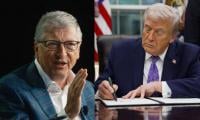Capital suggestion
The yuan
By Dr Farrukh Saleem
Federal Minister for Planning Professor Ahsan Iqbal has said that “Pakistan is looking for the possibility of replacing [the] dollar with [the] yuan in cross-border trade with China.” The renminbi (RMB) is the official currency of the People’s Republic of China and the yuan is the primary unit. The People’s Bank of China, the central bank of the People’s Republic of China, is the official issuer of the renminbi.
Pakistan’s GDP of $283 billion is 2.6 percent of China’s $11 trillion GDP. And Pakistan’s GDP is a mere 0.4 percent of its $77 trillion global GDP. Our share in global exports of $16 trillion is a paltry 0.13 percent. What that means is that, whether Pakistan replaces the dollar with the yuan in cross-border trade with China or not, Pakistan’s action will not have any impact on global trade.
But, Pakistan replacing the dollar with the yuan in cross-border trade with China has major implications for Pakistan. Here’s the quantum of trade: Pakistan’s exports to China are around $1.8 billion a year and China’s exports to Pakistan hover around $14 billion a year. Resultantly, Pakistan’s trade deficit with China stands at a colossal $12 billion a year.
Red alert: Pakistan’s trade deficit with China is roughly 40 percent of Pakistan’s total trade deficit with the rest of the world. Currently, Pakistan raises dollar-debt from a wide variety of sources – including multilateral institutions like the IMF – to finance the hefty trade deficit. Once we decide to replace the dollar with the yuan in cross-border trade with China, we would be looking at China to finance the 80 billion yuan trade deficit. That would essentially mean Pakistan moving away from multi-source dependence to single-source dependence.
Red alert: In just five years of trading, our yuan-denominated indebtedness would reach 400 billion yuan or the equivalent of $60 billion. Red alert: Pakistan replacing the dollar with the yuan would mean handing over part of the State Bank of Pakistan’s monopoly over Pakistan’s monetary policy.
China certainly stands to gain. China has long been trying to make the yuan the reserve currency. Yes, China’s investments in Pakistan will face no exchange risk. In essence, it would amount to China’s projection of its economic power over Pakistan – a big geo-strategic plus for China at no added cost.
Here’s what happened in Zimbabwe, China’s other ‘all-weather friend’: between 2010 and 2015, China granted Zimbabwe over $1 billion in low-interest loans. In 2015, President Xi Jinping visited Zimbabwe and cancelled some of Zimbabwe’s China-held debts. In return, Zimbabwe made the Chinese yuan legal tender. Over time, the Zimbabwean dollar became worthless and in 2009 the Reserve Bank of Zimbabwe, the central bank of Zimbabwe, abandoned the Zimbabwean dollar. Resultantly, the Reserve Bank of Zimbabwe lost all control over Zimbabwe’s monetary policy.
Under the Free Trade Agreement (FTA), Pakistan offered China “concessions on 6,803 tariff lines” with zero tariff rates on “electric and electronic products, machinery, chemicals and various raw materials…” The FTA has seriously hurt Pakistan as the balance of bilateral trade is heavily tilted in China’s favour.
To be certain, China and Pakistan had agreed upon a swap arrangement some six years ago. What more does China want? Is it in Pakistan’s interest to have a parallel currency? Countries fight really hard to protect their currencies. Should we surrender ours without a fight? Is it simply the adoption of the yuan as a currency of settlement? Is it a pipe-dream or is it 21st century colonisation?
The writer is a columnist based in Islamabad.
Email: farrukh15@hotmail.com Twitter: @saleemfarrukh
-
 Prince Harry's Friend Rubs Shoulders With Mike Tindall And Zara
Prince Harry's Friend Rubs Shoulders With Mike Tindall And Zara -
 Google Rolls Out First Android Update Of 2026 To Pixel Phones
Google Rolls Out First Android Update Of 2026 To Pixel Phones -
 Matt Damon Reveals Wife Luciana Barroso Found Ben Affleck THIS In 'Good Will Hunting'
Matt Damon Reveals Wife Luciana Barroso Found Ben Affleck THIS In 'Good Will Hunting' -
 Aurora Alert: Northern Lights Visible Tonight At High Latitudes
Aurora Alert: Northern Lights Visible Tonight At High Latitudes -
 Honeybees Could Help Humans Communicate With Aliens, Scientists Say
Honeybees Could Help Humans Communicate With Aliens, Scientists Say -
 'Home Alone' Star Daniel Stern Reflects On Overwhelming Fame
'Home Alone' Star Daniel Stern Reflects On Overwhelming Fame -
 Damson Idris, Lori Harvey Add Feul To Patch Up Rumors With PDA: Watch
Damson Idris, Lori Harvey Add Feul To Patch Up Rumors With PDA: Watch -
 Jealous Clash Over Boyfriend At Texas Gym Ends In Arrest
Jealous Clash Over Boyfriend At Texas Gym Ends In Arrest -
 Colleen Hoover Shares Major Update On Her Cancer Battle: 'Huge And Scary'
Colleen Hoover Shares Major Update On Her Cancer Battle: 'Huge And Scary' -
 Trump Targets Microsoft Over AI Electricity Costs
Trump Targets Microsoft Over AI Electricity Costs -
 ‘Making Star Trek Real’: Elon Musk Reveals Futuristic Vision For SpaceX
‘Making Star Trek Real’: Elon Musk Reveals Futuristic Vision For SpaceX -
 William Feels Frustrated As Tighter Security Makes Lives Of Windsor Residents Harder
William Feels Frustrated As Tighter Security Makes Lives Of Windsor Residents Harder -
 Meta Compute: Zuckerberg's Gigawatt-scale Bet To Dominate The AI Era
Meta Compute: Zuckerberg's Gigawatt-scale Bet To Dominate The AI Era -
 King Charles Big Plans For Meghan Markle, Prince Harry Revealed
King Charles Big Plans For Meghan Markle, Prince Harry Revealed -
 'Stranger Things' Creators Duffer Brothers Face Shocking Accusations
'Stranger Things' Creators Duffer Brothers Face Shocking Accusations -
 Google Ends Dark Web Personal Data Leak Alerts From January 15
Google Ends Dark Web Personal Data Leak Alerts From January 15



